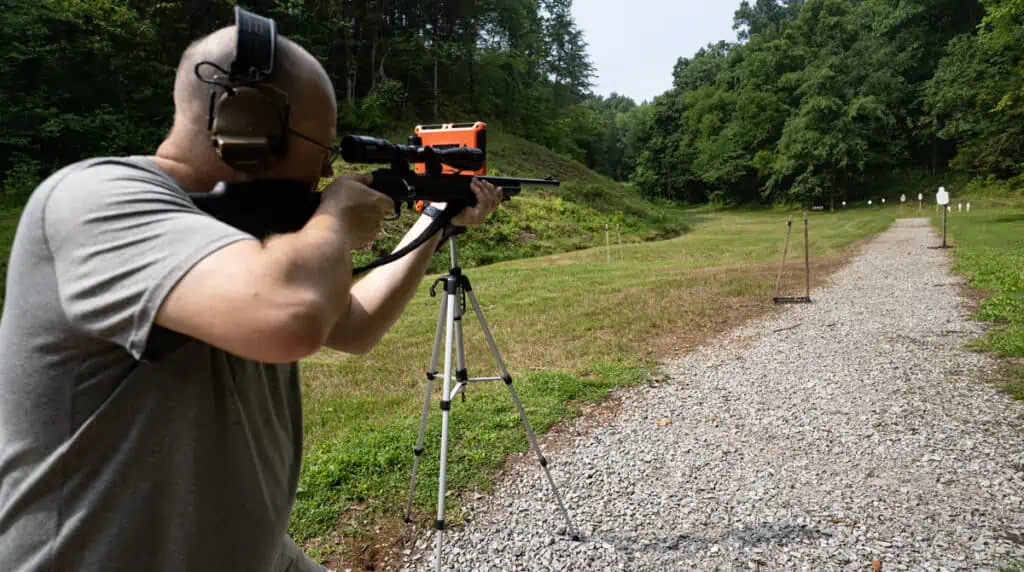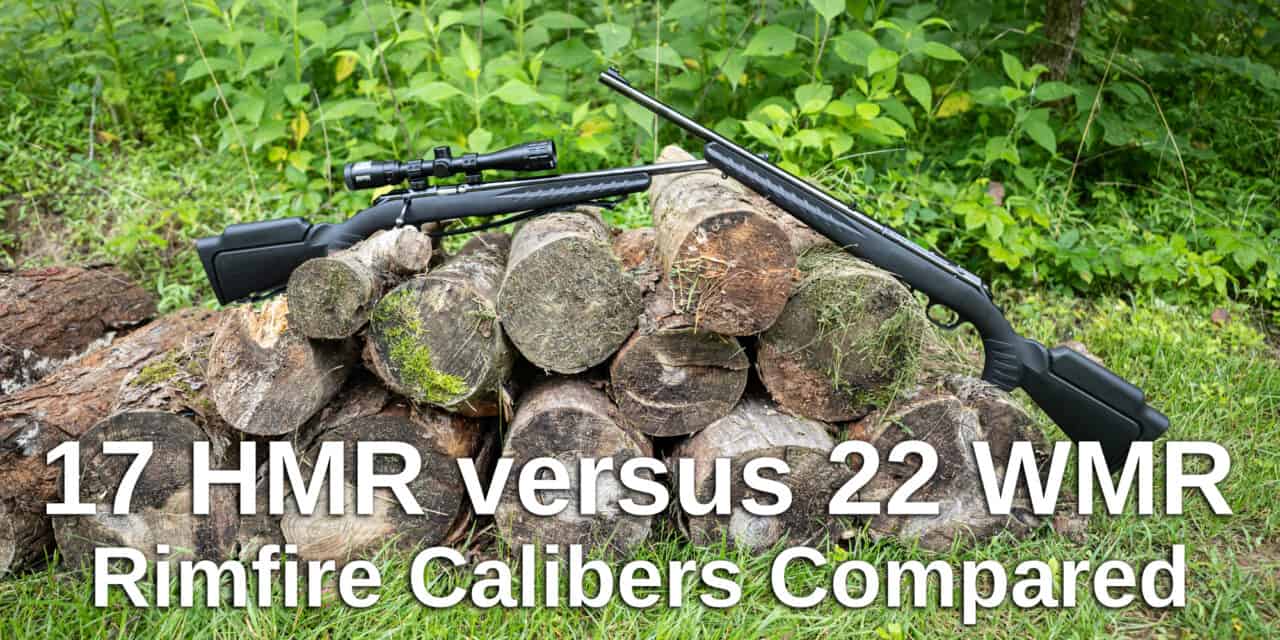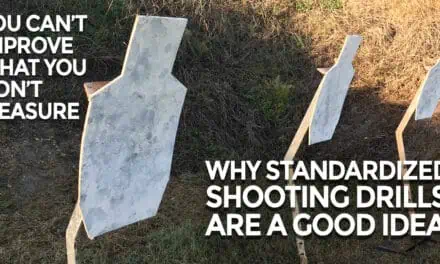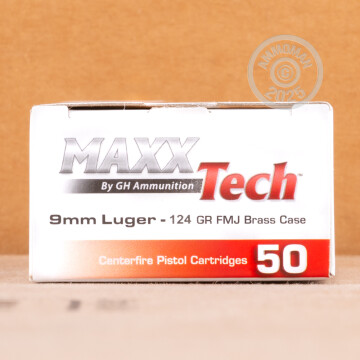When it comes to affordable, convenient, and easy-to-fire shooting, it’s hard to beat rimfire cartridges. These rounds, while less powerful than centerfire, can be surprisingly effective at the range and in the field. The .17 Hornady Magnum Rimfire (HMR) and the .22 Winchester Magnum Rimfire (WMR) are two cartridges that bring a high level of performance to the rimfire category. They’re very similar but do have some important differences. With a little research, you’ll be able to choose the right round for your target shooting, small-game hunting, and varmint control.
17 HMR vs 22 WMR
The 17 HMR is basically a necked down version of the 22 WMR cartridge. 17 HMR ammunition is faster and flies with less bullet drop over distance but it doesn’t pack as much energy or power downrange as 22 WMR. 22 Magnum (WMR) is also typically easier to find and cheaper to buy.
Now that you’ve got the basics for each, let’s dive into the details.
17 HMR vs. 22 WMR: Specs
| .17 HMR | .22 WMR | |
|---|---|---|
| Released | 2002 | 1952 |
| Bullet Diameter | .172 inches | .224 inches |
| Rim Diameter | .286 inches | .294 inches |
| Case Length | 1.058 inches | 1.055 inches |
| Total Length | 1.349 inches | 1.35 inches |
| Bullet Weight | 17 to 20 grain (17 is standard) | 30 to 50 grains |
Size, Shape, and Bullet Weight Differences

These two cartridges are very similar and, at the same time, uniquely different. The similarities come from the case size. Both cases have a rim diameter of roughly .29 inches, and an overall case length of about one inch. This similarity should come as no surprise, as the .17 HMR is a “necked down” version of the .22 WMR.
In other words, it’s the same case (give or take a few minor differences) with a smaller bullet. The real difference is in the bullet diameter and bullet weights. The .17 HMR has a thinner, lighter bullet packed into (essentially) the same case. It has a shouldered appearance, while the .22 WMR has a straight-wall case. These physical differences, as we will see, create unique bullet performances.
Market Factors: Pricing and Availability
While it has less to do with design, and more to do with market conditions, the .22 WMR is generally the more available and diverse option. You can often find twice the variety of cartridge products for the .22 WMR, and while the .17 HMR is far from rare, it doesn’t have as many options as the well-established .22 WMR. As for pricing and market availability, neither of these cartridges is significantly more affordable than the other. .22 WMR ammunition may be slightly more affordable, but not so much that it will change a buying decision.
.17 HMR vs. .22 WMR: Ballistics

Physical differences and market availability are important, but to gun owners of all experience levels, what really matters is how the bullet performs at the range and in the field.
Velocity
| Product | Muzzle Velocity | 100-Yard Velocity |
|---|---|---|
| 22 WMR - 25 Gr. NTX (Winchester) | 2,100 | 1,280 |
| 17 HMR - 15.5-grain NTX (Winchester) | 2,550 | 1,850 |
| 22 WMR - 40 Gr. Gamepoint JSP (CCI) | 1,875 | 1,385 |
| 17 HMR - 20 Gr. Gamepoint JSP (CCI) | 2,375 | 1,754 |
| 22 WMR - 40 Gr. JHP (Remington) | 1,910 | 1,355 |
| 17 HMR - 17 Gr. JHP (Remington) | 2,550 | 1,434 |
| 22 WMR - 30 Gr. VMAX (Hornady) | 2,200 | 1,421 |
| 17 HMR - 17 Gr. VMAX (Hornady) | 2,550 | 1,901 |
Velocity has such an impact on bullet performance that it is often the starting point when researching a cartridge. In this comparison, we see a clear victory for the .17 HMR, which is predictable when you consider the design of these two rounds. (Same case but one has a lighter bullet.) With essentially the same amount of force behind the bullet, the lighter projectile of the .17 HMR comes out at a faster speed. It easily reaches 2,500 feet-per-second (fps) for most cartridges, and in our comparison the slowest .17 round was faster than the fastest .22 WMR round.
Faster Velocity: .17 HMR
Energy
| Product | Muzzle Energy (ft-lbs) | Energy at 100 Yards |
|---|---|---|
| 22 WMR - 25 Gr. NTX (Winchester) | 245 | 91 |
| 17 HMR - 15.5-grain NTX (Winchester) | 231 | 122 |
| 22 WMR - 40 Gr. Gamepoint JSP (CCI) | 312 | 170 |
| 17 HMR - 20 Gr. Gamepoint JSP (CCI) | 250 | 137 |
| 22 WMR - 40 Gr. JHP (Remington) | 324 | 163 |
| 17 HMR - 17 Gr. JHP (Remington) | 245 | 116 |
| 22 WMR - 30 Gr. VMAX (Hornady) | 322 | 134 |
| 17 HMR - 17 Gr. VMAX (Hornady) | 245 | 136 |
While velocity is important, ballistic energy is arguably the more critical factor, especially when you are using the cartridges for hunting or varmint control. In this comparison, we see a clear winner, as the .22 WMR has more power, largely thanks to the heavier bullets. As the bullet weight goes up, so too does the energy. The most powerful round in our entire comparison happens to be the one of the heaviest (40-grain .22 WMR from Remington), while the weakest is also the lightest (15.5-grain .17 HMR from Winchester). It’s not a perfect upward scale, but as the bullets get heavier the energy gets higher. We can confidently say that if you are choosing a round based on muzzle or 100-yard energy, the .22 WMR is a better option.
Energy Winner: .22 WMR
Trajectory
A good shooter can compensate for dropping bullet trajectory. In fact, it’s a must for all shooters, regardless of the cartridge. However, the straighter the trajectory, the better the round will be for distance shooting. The .17 HMR has a reputation as a reliable rimfire round with a good straight-line trajectory. This reputation appears to be well earned, as the .17 HMR tends to have better trajectory stats than the .22 WMR. For example, when zeroed to 50 yards, Remington’s 17-grain round drops 0.4 inches at 100 yards. Under the same conditions, Remington’s 40-grain .22 WMR drops 1.9 inches. At 150 yards, the HMR drops 3.7 inches, while the WMR drops 8.5. This is trend is repeated in virtually all of the rounds we have seen.
Trajectory Winner: .17 HMR
Choosing the .22 WMR or the .17 HMR
Selecting the right cartridge for your specific purposes can be complex, but in this case it really comes down to speed and trajectory against overall power. The .17 HMR is probably your better option if you will be placing shots at 100 or 200 yards. It maintains excellent trajectories, and with the right bullet can be an effective small-game round at longer distances. However, the .22 WMR is a superior option when you need more power. It has more energy from the barrel to the target, making it a stronger option for larger small game, such as bigger rabbits, tough-skinned prairie dogs, and varmints like raccoons and opossums.






